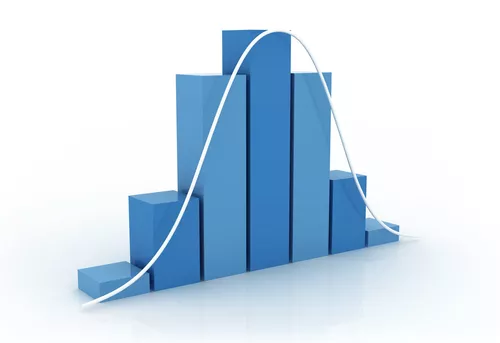Understanding Quantitative Data Analysis
A Guide to Navigating Numbers and the Realities they Represent
Data drives the world. From reflecting economic trends to representing societal demographics, statistics greatly influence decision making in the creation and implementation of public policies.

The biggest breakthroughs in human history have occurred when we have studied numbers and investigated what they mean. For instance, landing on the moon only worked when astronomers did the math and figured out the exact angles at which the Apollo 11 spacecraft had to navigate through space to deposit Neil Armstrong on the surface of the silver celestial object.
At present, perhaps the most profound example demonstrating our reliance on quantitative analysis comes from data-based studies of the Coronavirus pandemic. In late 2019, when a disease-causing microbe brought the world to a halt, the global healthcare sector sprang into action – quantifying its observations about illness struck patients. This process highlighted that social distancing could mitigate the virus’ impact, as scientists inferred that case numbers fell when infected people stayed away from others.

Defining Quantitative Data Analysis
Gathering numerical information is key to deriving insights from research. However, simply compiling data is not enough, as statistics alone don’t mean much. It is when they are examined to explain an issue, that they become significant. Quantitative data analysis refers to the in-depth and systematic study that makes numbers meaningful.
Often, quantitative data analysis is undertaken to support or refute a hypothesis.
For example, as part of your research, if you have speculated that racial bias exists in a country’s approach to entrepreneurship, you can count funds secured by minority groups’ startups, as well as those given to new companies operated by more populous ethnic communities.
If you stumble across the fact that people invest less money in the former, your hypothesis would have found evidence to authenticate it. You might also be proven wrong if the data tells a different story. In that case, new conclusions would have come to light.
Conducting quantitative data analysis is a two-step process. It involves descriptive analysis and statistical inference.
Descriptive Analysis
As the name suggests, a descriptive analysis is a basic summary of the data generated through quantitative research. It includes a commentary on the following statistical factors:
Statistical inferences in quantitative data analysis
An inferential analysis entails deriving significance from the values discussed as part of your descriptive analysis. This part of quantitative research involves studying patterns, as dictated by the numbers you have acquired, seeing how they prevail in a population in a specific manner, and why.
To elaborate on statistical inference, let us visit an imagined urban neighborhood.
Tracking the number of buildings in this locality, perhaps you notice that at a specific point in time, housing projects rapidly diminished in the area, decreasing from 15 to 5. You have the statistics. Now it is time for analysis. Investigating reasons behind declining property construction may show you that a hurricane swept the region, and tore down several homes that were near completion, a few years ago. The meaning inferred, you can conclude that a natural disaster stalled projects in the vicinity.
Statistical inference is represented by the Bell Curve graph, which is interpreted by identifying data high and low points on a curve. The left of the curve shows scores that fall below the average value, and the right displays those that lie above it. Standard deviation, i.e., the process of measuring variation between values is used in understanding this graph.

Advantages of Quantitative Data Analysis
Statistical research comes brimming with benefits. Among other advantages, a quantitative study design allows you to:
Select Larger Samples
Unlike subjective analysis, quantitative data analysis is conducted through randomized sampling methods. You are not working with a limited participant pool with the latter that you have to interview in exhaustive detail.
The idea behind a numerical evaluation is to reach generalizable conclusions. This is something you can capitalize on by recruiting various study subjects. Surveying a larger sample will give more credibility to your research, as sampling bias will be less, anomalies will be fewer, and not capable of affecting the results to a great extent.
Calculating your sample size is possible if you know your target population size that you are studying, the acceptable margin of error (5 percent is usually acceptable), and the confidence level ( usually 90 or 95% is acceptable).
It is impossible to achieve truly representative samples under normal field data collection conditions across all demographic sub-groups for your data, and data weighting measures will at times, need to be considered.
Gather Insights Faster with Quantitative Data Analysis
Quantitative data analysis can be carried out in real-time. It doesn’t take long to count and calculate variables, and most often, statistical studies are simply asking participants to respond with a yes or a no to the questions asked. Because data can be acquired without delays, inferences can be made immediately as well.
Be More Objective
When you are studying statistics, the numbers are doing the talking, not your own personal preferences. In a qualitative analysis, this is not the case because when you explore the circumstances of a participant just by talking to him, you may be at risk of misinterpreting his words through your personal perspective.
Quantitative data analysis rules out this issue because there is hardly any room for personal opinion to influence it with data dictating observations. For instance, if there is a study exploring the prevalence of blood pressure in adolescents, the reading on the sphygmomanometer will remain what it is, regardless of anyone’s effort to change it. Ultimately, this reading will direct the researcher to the most realistic conclusions about the topic under consideration.
Validate Quantitative Data Analysis Results
A study that can be replicated over and over again can ensure greater authenticity of results. Since quantitative research can be conducted faster and more easily due to its focus on concise questions, it can also be repeated. This repetition allows researchers to test whether they can acquire the same results their initial investigation produced. If they succeed in doing so, their insights can be considered valid.
Focus Effectively on Research Ethics
When conducting research, maintaining the anonymity of participants is a crucial ethical practice.
In a subjective analysis, scientists have to go to great lengths to make sure nobody finds out who their case study subjects were. They have to assign pseudonyms to the people and locations that play a role in the story narrated by the participant while also taking care to filter out data so that audiences cannot associate specific circumstances to specific folks.
This problem does not plague researchers as much in quantitative data analyses. The focus is on how the answers respondents give contribute to a bigger data set. Hence, while demographic markers matter, participants’ personal characteristics are not significant, and subjects can take part in a study without providing personally identifiable information such as their name and where the work.
Since the introduction of GDPR and new U.S. state privacy legislation has come into effect respondents, have significantly more control over the use of their personally identifiable information and their personal data.
Quantitative data analysis holds weight. Scientists, academics, and policymakers extensively use it to identify problems confronting society and find effective solutions by ascribing meaning to the information this kind of research generates.
Statistics also complements other forms of research by providing additional support for the claims being made.
Subjective analysis, for instance, includes the technique of coding where non-numerical data is categorized into groups, each of which is marked by a number.
Quantifying and Analyzing Qualitative or Unstructured Data
Coding makes it easier for researchers to derive themes from subjective data. Let us consider that there is a qualitative study being conducted to explore fashion choices in South Asia. The sample size is 40 middle-aged women.
With limited time on their hands, it may be challenging for the researchers conducting this study to comb through statements made by every participant and see how many of them said they love to wear the traditional Sari, a dress recognized by its long flowing folds of the garment.
However, if researchers assign a numerical value to this outfit, as and when each participant is interviewed, it will be less of a hassle compiling statements reflecting the same number at the end of the study!
Quantitative Data Analysis: Conclusion
When researchers are willing to lend a keen ear, numbers can tell comprehensive stories. Quantitative data analysis unearths strategies to expand our horizons of knowledge and equip society with solutions for its almost insurmountable problems.
Follow
OvationMR

Jim Whaley
Author
Jim Whaley is a business leader, market research expert, and writer. He posts frequently on The Standard Ovation and other industry blogs.
OvationMR is a global provider of first-party data for those seeking solutions that require information for informed business decisions.
OvationMR is a leader in delivering insights and reliable results across a variety of industry sectors around the globe consistently for market research professionals and management consultants.

Need help with your project?
We are ready to offer you:


